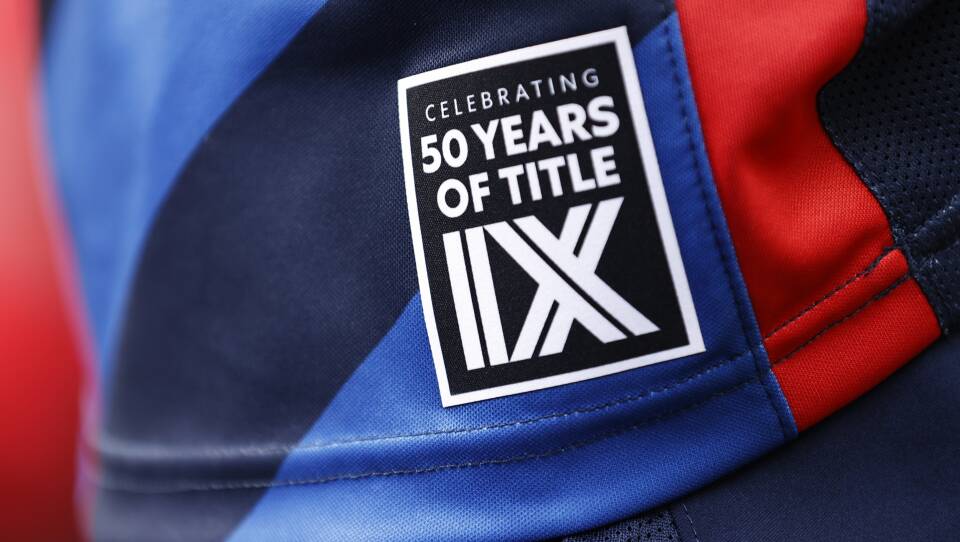In 1972, the passage of Title IX promised a more equal landscape for women in education. 50 years later, longtime coach Sally Starr said the amendment's impacts on women’s sports have been a grab bag of major change and familiar discrimination.
Starr, head coach of the Boston University Field Hockey team for 45 years, joined Boston Public Radio to reflect on how the landscape of women’s sports has changed since the passage of the amendment.
“Things have changed dramatically,” Starr said “But it wasn’t immediate.”
Title IX is an amendment which prohibits the Department of Education from discriminating their funding to schools based on sex, including sexual orientation. Today, however, Title IX is primarily understood in the context of sports. With protection against discrimination, women’s teams suddenly had the capacity to grow.
According to the Women’s Sports Foundation’s first president Donna de Varona, women’s participation in sports has grown exponentially since Title IX’s passage: “there has been a 545% increase in the percentage of women playing college sports and a 990% increase in the percentage of women playing high school sports,” she said in a 2016 article .
But Starr said those playing and coaching women's sports in those first years post-Title IX were not treated equally to men's teams. She said she not only had to coach two different teams in order to “justify [her] position,” but she also found her team having significantly worse opportunities than the men’s, having to “sleep on the floor” at athlete’s homes for away games, while men’s teams were put up in hotels.
Although today, things are certainly different for BU field hockey — which now has the funding to provide 12 athletes with a full scholarship to play on the team — progress has not exactly been fast. “It’s been a turtle crawl in many ways,” said Starr.
Some of the residual problems that Starr discussed included the lack of female coaches for women’s teams, and the distinct differences between attention paid and supplies given to women’s collegiate and professional teams, which, she said, can all make her feel “really frustrated.” But, she continued, that doesn’t stop her from loving the game, and her job.
“If you love what you’re doing, you just plow ahead to make things better each day and each year,” said Starr.
After Starr’s appearance, Boston Public Radio took calls from listeners who shared their experiences about being in women’s sports in the early days of Title IX.
Susan from Petersburg, New Hampshire, played high school water polo in the 1970s, and shared that her team locker room was “not attached to the pool,” leaving the women to walk outside in their bathing suits during the winter season.
Ann in Jamaica Plain, who played high school sports around the same time, quit her volleyball team to begin playing basketball because she “was not allowed to play more than one sport at a time." Today, she still plays with a team of women, who call themselves “The Hot Flashes.”
But perhaps the most poignant call was from Melissa Ludtke, a sportswriter who was the plaintiff in a landmark court case for women in sports journalism, which allowed female reporters into baseball locker rooms.
Ludtke shared her experience as a rower at Wellesley, explaining that pre Title IX, even women’s colleges were not able to participate in a traditional kind of competition. Schools would “mix up the games,” putting women from the different teams on the same boats, rather than competing against each other. “The idea was to have tea after, as ladies would,” she said.
And even today, she added, seemingly minor differences like differentiating between “basketball” and “women’s basketball,” continue to keep up the rhetoric that existed 50 years ago. “The fallback and the default,” Ludtke said, “is always to the men as the ones who really play the sport.”




